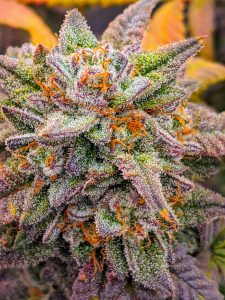Unlock the Secrets of Light for Cannabis Cultivation with Hanging Farm
Light is the lifeblood of any growing operation, particularly in marijuana cultivation. Each plant requires light for photosynthesis and growth, but Cannabis has specific preferences in terms of light intensity and spectrum. Understanding and catering to these requirements are crucial in ensuring the health and productivity of your crop.
The optimal spectrum for Cannabis flowering involves a higher percentage of red and blue light, complemented by a bit of yellow-green light. Red light is the principal driver of photosynthesis, whereas blue light associates with photoperiod control receptors in cannabis.
Uniquely, as a photoperiodic plant, Cannabis uses light to decide when to flower, necessitating extended periods of darkness to trigger flowering. In indoor grow rooms, this control is straightforward. However, in a marijuana greenhouse, growers must employ blackout curtains to deliver the necessary darkness for flowering.
Lighting schedules vary between Cannabis strains, with plants generally requiring longer days and shorter nights during the vegetative growth phase, and longer nights during the flowering phase. For commercial grows, we typically set the lights on for 11.5 hours per day and off for 12.5 hours during the flowering phase, providing no less than 18 hours of light per day during the growing season.
When selecting marijuana grow lights, the technology used is of utmost importance. Modern grow rooms favor LED lights for their energy efficiency compared to older High-Pressure Sodium (HPS) lights. LEDs are superior due to their lower heat emission and greater energy use for lighting. Nonetheless, LEDs still produce significant heat, particularly considering the amount and intensity of light necessary for commercial marijuana cultivation.
Generally, a 750w LED light with a good spectrum is considered equivalent to a 1000w HPS light, both providing a similar Cannabis growing environment. These lights can deliver 1400-1600 μmol/s/m^2 (PPFD) of effective light to the upper Cannabis leaves (4*4 sq. ft. per lamp, with the Cannabis top about 1-1.5 ft. from the lamp).
However, caution is needed, as some fixtures claiming to offer more light at lower wattages often use a lot of blue and full-spectrum beads with higher luminous efficacy. Yet, excess blue and yellow-green light doesn’t necessarily enhance Cannabis growth. It’s ineffective light, so simply aiming for high PPFD isn’t the goal.
In designing their grow rooms, growers must account for light’s vital role in determining environmental controls and climate control systems necessary for maintaining ideal growing conditions.
Choose Hanging Farm for your Cannabis cultivation needs – we illuminate the path to efficient and effective growth.







